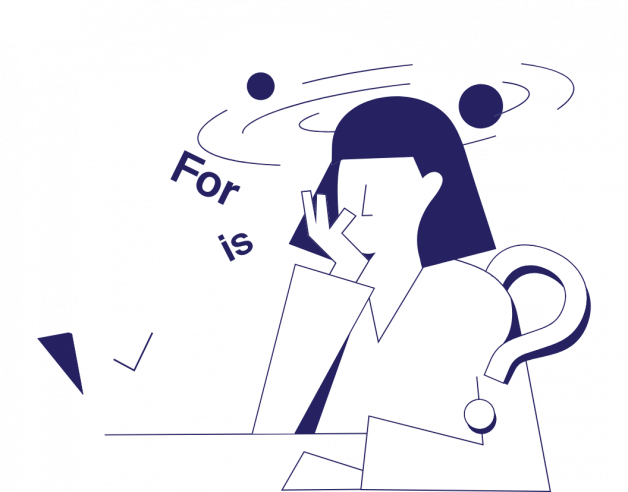
- 4-minute read
- 6th July 2023
“Is”, “For” and 12 Other Commonly Confused Prepositions
A preposition is a word that indicates the relationship between a noun or pronoun and other words in a sentence. Prepositions can show location, direction, time, and so on. They are useful for clarifying how all the elements in a sentence are connected. But with about 150 prepositions in English, it’s easy to get them confused. In this post, we’ll take you through the most common prepositions, including what they mean and how to use them.
List of Commonly Confused Prepositions, Plus Some Other Parts of Speech
Below, we’ve compiled a list of some of the most common prepositions (and words commonly confused for prepositions), their definitions, and examples of how to use them in a sentence.
Is
Is is not a preposition; it is the present-tense form of the infinitive verb phrase to be. We use it to indicate an identity, a quality, or a state of existence. Is takes the third-person singular form of a noun, and we use is with nouns or with the pronouns he, she, and it. For example:
He is the best friend I have ever had.
For
Often, for is a preposition indicating purpose, destination, duration, or an intended recipient. For example:
I bought a gift for my family.
She studied for many hours.
Of
Of typically functions as a preposition signifying possession, origin, or composition. It connects nouns or pronouns to other elements in a sentence. For example:
She is a citizen of France.
I would like a cup of coffee.
With
With most commonly serves as a preposition indicating association or possession and connecting nouns or pronouns to other elements in a sentence. For example:
She went shopping with her cousin.
To
To most commonly functions as a preposition indicating direction, destination, or purpose. For example:
I gave my sweater to my sister, but she’s giving it back.
In
The most common use of in is as a preposition indicating location, position, or inclusion within something. It shows the relationship between two objects or expresses a sense of being inside or surrounded by something. For example:
The money is in my wallet.
As
Most commonly, as functions as a conjunction or preposition. When it’s a conjunction, as can introduce a clause that indicates a reason, cause, or comparison. For example:
This kid is as smart as a whip.
As can also function as a preposition showing a role or function or how something is perceived. For example:
Find this useful?
Subscribe to our newsletter and get writing tips from our editors straight to your inbox.
She works as a lawyer.
They played baseball as a team.
From
We use from mostly as a preposition indicating origin, source, or separation. It shows the relationship between two objects or expresses a sense of movement or direction away from a place or time. For example:
The plane has left from the airport.
The children moved from the basketball court to the tennis court.
The
The is not a preposition; it is a definite article used to refer to a specific person, thing, or group and is widely recognized as the most common English word. We use it to specify a particular noun in a sentence, distinguishing it from other nouns. For example:
The donut from your bakery was delicious!
About
About has several uses in a sentence, but it most commonly serves as a preposition that expresses the subject or content of something or the direction or movement of an action. For example:
She walked about the park.
That book was about Ireland.
By
As a preposition, by shows the relationship between two objects or expresses the manner in which something is done. For example:
She traveled by train.
The book was written by an acclaimed author.
During
During functions primarily as a preposition that indicates a particular time or period in which an action or event takes or has taken place. For example:
Surprisingly, it snowed during the summer.
When
When has multiple functions in a sentence, but it is not a preposition. One of the most common uses for when is as an adverb signifying the time or circumstance of an event. For example:
She got up and left when I walked into the room.
Into
Into is primarily a preposition indicating movement from the outside to the inside of something, establishing a relationship between a noun and a destination or a transformed state. For example:
He jumped into the pool.
They transformed a simple idea into a successful business.
Expert Proofreading Services
Ensure that you’re using every part of speech correctly by having our expert editors check your writing. Send in your free sample of 500 words or less and see for yourself!






